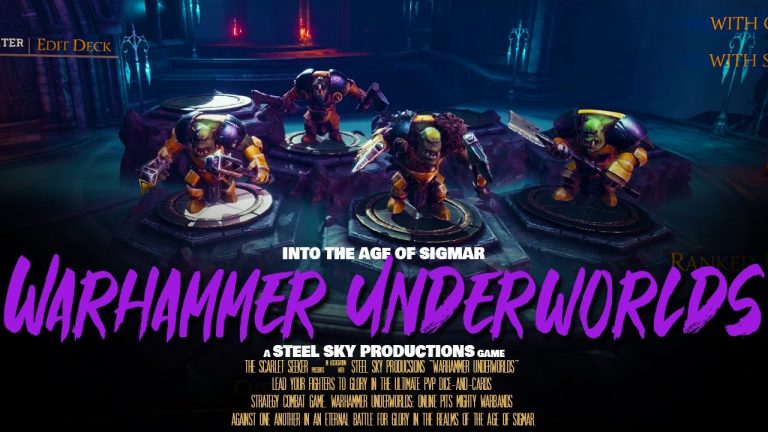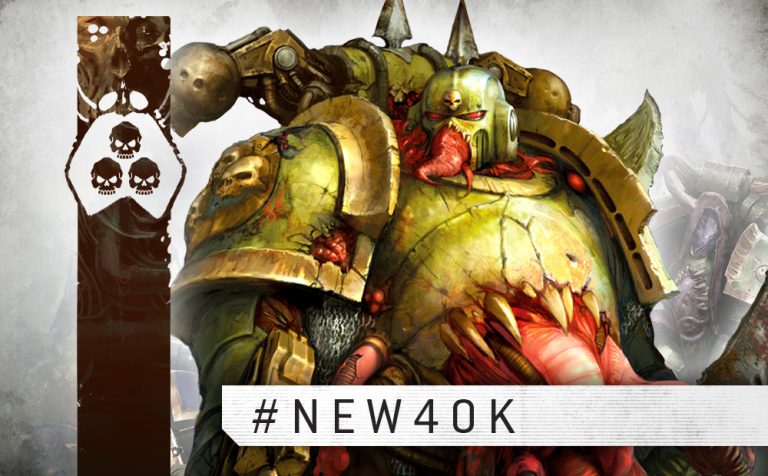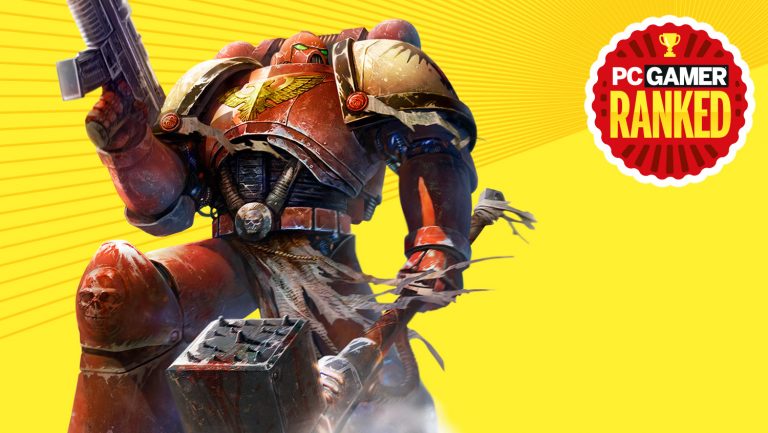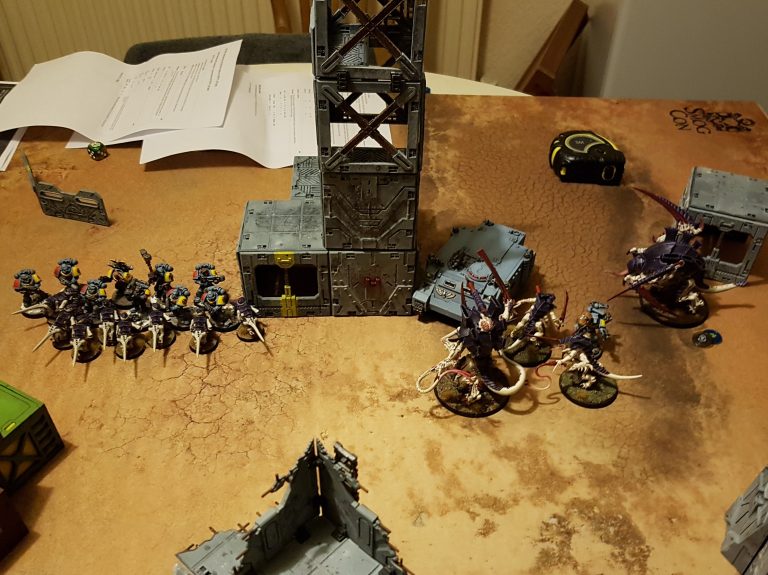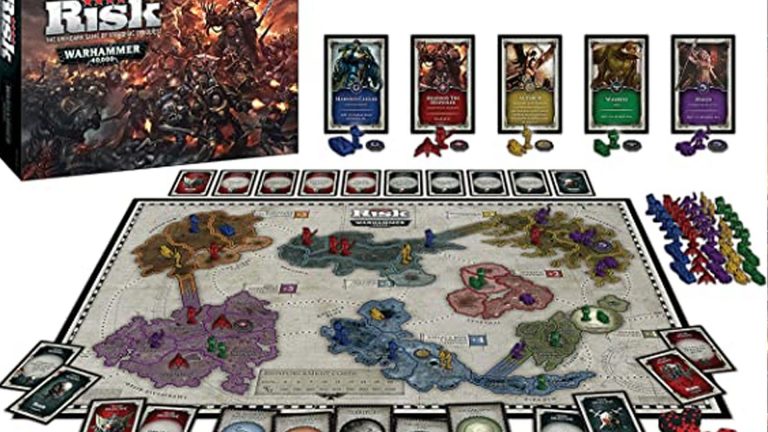Warhammer 40k Games: Advanced Painting Techniques For Showcase Quality
If you’re a fan of Warhammer 40k games and want to take your painting skills to the next level, you’ve come to the right place! In this article, we’ll delve into the world of advanced painting techniques for achieving showcase-quality miniatures. Whether you’re a seasoned painter looking to refine your skills or a beginner eager to learn the ropes, we’ve got you covered. Get ready to unleash your creativity and elevate your Warhammer 40k game with these expert tips and tricks.
When it comes to painting Warhammer 40k miniatures, the goal is to create stunning models that catch the eye and bring the game to life. Showcase-quality painting is all about attention to detail, precision, and technique. From mastering layering and highlighting to exploring advanced blending and weathering effects, we’ll walk you through step-by-step instructions on how to achieve jaw-dropping results. So, grab your paintbrushes, put on your creative hat, and let’s dive into the world of Warhammer 40k advanced painting techniques that will take your models from ordinary to extraordinary. Get ready to amaze your friends and opponents on the gaming table!
Looking to take your Warhammer 40k miniatures to the next level? Learn advanced painting techniques that will elevate your models to showcase quality. From blending colors to highlighting and shading, these techniques will bring out the intricate details of your miniatures. Explore techniques such as wet blending, edge highlighting, and layering to achieve professional-looking results. Whether you’re a beginner or a seasoned painter, these tips and tricks will help you create stunning tabletop armies that will impress your opponents. So grab your brushes and get ready to level up your painting skills in the world of Warhammer 40k!

Warhammer 40k Games: Advanced Painting Techniques for Showcase Quality
Warhammer 40k is a popular tabletop wargame that allows players to recreate epic battles in a futuristic science fantasy setting. One of the key aspects of the game is painting the miniatures, which adds a whole new level of immersion and personalization. While basic painting techniques can help bring your miniatures to life, advanced painting techniques can take your models to a whole new level of showcase quality. In this article, we will explore some of these advanced techniques that will help you create stunning and eye-catching miniatures for your Warhammer 40k games.
Lighting and Shadows
One of the most effective ways to enhance the visual impact of your painted miniatures is by incorporating lighting and shadows. This technique involves using different shades of paint to create the illusion of light hitting different parts of the model. By carefully highlighting and shading specific areas, you can create depth and dimension, making your miniatures look more realistic and visually striking.
To achieve this effect, start by identifying the main light source for your miniature. This could be a fictional light source within the game’s universe or simply a simulated overhead light. Once you have determined the light source, use lighter shades of paint to highlight the areas that would naturally catch the light, such as the top of the model’s head or the edges of armor plates. Conversely, use darker shades to create shadows in areas that would be in the model’s shadow or further away from the light source.
Layering and Blending
Layering and blending are advanced painting techniques that can give your miniatures a smooth and seamless finish. Layering involves building up multiple thin layers of paint to gradually add depth and detail to the model. This technique is particularly useful for creating smooth transitions between different colors or achieving gradients on larger surfaces.
Start by applying a base coat of the desired color to the area you want to layer. Once the base coat is dry, apply a slightly lighter shade of the same color on top, focusing on the areas where the light would naturally hit. Repeat this process with progressively lighter shades until you achieve the desired level of depth and highlight. Remember to thin your paints with water or a medium to ensure smooth and even application.
Blending, on the other hand, involves seamlessly transitioning between different colors or shades. This technique requires a bit more skill and practice but can result in stunning and realistic effects. Start by applying a base coat of the lighter color, then gradually introduce the darker color by mixing it with the lighter one on your palette. Use a brush with soft bristles and make small, controlled strokes to blend the colors together. Keep blending until no harsh lines or edges are visible, creating a smooth and natural transition.
Airbrushing Techniques
Airbrushing is a versatile technique that can help you achieve smooth color gradients, precise details, and weathering effects on your miniatures. This technique involves using an airbrush to apply thin layers of paint, allowing for a more even and controlled application compared to traditional brush painting.
One of the key advantages of airbrushing is its ability to create smooth color gradients, which can be challenging to achieve with a brush alone. By controlling the air pressure and paint flow, you can create soft transitions between different colors, giving your miniatures a professional and polished look.
Airbrushing can also be used for precise detailing, such as painting intricate patterns or freehand designs. With the right stencils and masking techniques, you can add intricate details to your miniatures that would be difficult to achieve with a brush alone.
Additionally, airbrushing is an excellent technique for creating weathering effects, such as chipped paint, rust, or dirt. By using various masking techniques and specialized weathering paints, you can add realistic wear and tear to your miniatures, making them look battle-hardened and full of character.
Wet Blending
Wet blending is a technique that allows for seamless color transitions and gradients on your miniatures. It involves blending wet paint directly on the model, resulting in a smooth and natural transition between different colors or shades.
To achieve wet blending, start by applying the base colors to the areas you want to blend. Then, using a brush with soft bristles, apply a small amount of each color next to each other on the model. While the paint is still wet, use a clean brush or a blending brush to gently blend the colors together, making small circular or back-and-forth motions. The wet paint will naturally mix and create a smooth transition between the colors.
Wet blending requires practice and patience, as the timing and consistency of the paint play a crucial role in achieving a successful blend. Experimenting with different paint consistencies and techniques will help you master this advanced painting technique.
Benefits of Advanced Painting Techniques
By incorporating advanced painting techniques into your Warhammer 40k miniatures, you can elevate the overall visual appeal of your models. Showcase quality miniatures not only enhance your gaming experience but also make a lasting impression on others. These techniques allow you to add depth, dimension, and realism to your miniatures, making them stand out on the battlefield or display shelf.
Tips for Mastering Advanced Painting Techniques
1. Practice regularly: Advanced painting techniques require practice and experimentation to master. Set aside dedicated painting sessions to try out different techniques and refine your skills.
2. Study tutorials and resources: There are numerous online tutorials, forums, and resources available that can help you learn and improve your advanced painting techniques. Take advantage of these valuable sources of information.
3. Start with small projects: If you’re new to advanced painting techniques, start with smaller projects or individual models rather than tackling an entire army. This allows you to focus on mastering specific techniques without feeling overwhelmed.
4. Learn from others: Attend local painting workshops, join painting groups, or participate in online communities to learn from experienced painters. Engage in discussions, ask questions, and seek feedback to further enhance your skills.
5. Experiment and have fun: Don’t be afraid to experiment with different techniques, colors, and styles. Painting miniatures is a creative process, so embrace your artistic side and enjoy the journey.
In conclusion, advanced painting techniques can take your Warhammer 40k miniatures to the next level, allowing you to create showcase quality models that are visually stunning and immersive. Incorporate techniques such as lighting and shadows, layering and blending, airbrushing, and wet blending to enhance the overall quality and realism of your painted miniatures. With practice, patience, and a willingness to learn, you can become a master of advanced painting techniques and bring your Warhammer 40k armies to life on the tabletop.
Key Takeaways: Warhammer 40k Games – Advanced Painting Techniques for Showcase Quality
- Start with a clean and well-prepared miniature.
- Use thin layers of paint for smoother and more detailed results.
- Highlight and shade your painted miniatures to create depth and visual interest.
- Add fine details like weathering, battle damage, and freehand designs to enhance realism.
- Take your time, practice, and experiment to develop your own unique painting style.
Frequently Asked Questions
What are some advanced painting techniques for Warhammer 40k games?
When it comes to painting your Warhammer 40k miniatures, there are several advanced techniques you can use to achieve a showcase quality finish. One technique is edge highlighting, where you carefully paint a lighter color along the edges of your model to create definition and depth. Another technique is wet blending, which involves mixing two or more colors on the model itself to create smooth transitions and gradients. Layering is also a popular technique, where you build up thin layers of paint to achieve smooth and realistic shading. Additionally, using washes and glazes can add depth and richness to your models.
Another advanced technique is called non-metallic metal (NMM), where you use paint to create the look of reflective metal surfaces without using metallic paints. This technique requires careful shading and highlighting to mimic the way light interacts with metal. Finally, weathering techniques such as dry brushing, sponge weathering, and chipping can be used to add realistic wear and tear to your models, making them look battle-worn and authentic.
How can I improve my brush control for advanced painting techniques?
Improving your brush control is essential for achieving showcase quality painting results. One way to enhance your brush control is by practicing on a variety of surfaces and textures. This will help you develop a better understanding of how different brushes and brush strokes interact with different surfaces. Additionally, using a smaller brush size can help improve your precision and control. Another tip is to hold your brush closer to the bristles, as this gives you more control over the fine details. Taking breaks during painting sessions can also help prevent hand fatigue, which can affect your brush control.
Experimenting with different brush techniques, such as dry brushing, stippling, and feathering, can also help you improve your brush control. These techniques require different brush movements and pressures, allowing you to develop a wider range of skills. Finally, don’t be afraid to make mistakes and learn from them. Painting is a continuous learning process, and each mistake is an opportunity to grow and improve your brush control.
What paints and tools are recommended for advanced painting techniques?
When it comes to advanced painting techniques for Warhammer 40k games, having the right paints and tools is crucial. High-quality paints with good pigmentation and smooth consistency are recommended for achieving a showcase quality finish. Brands such as Citadel, Vallejo, and Army Painter are popular choices among hobbyists. It’s also important to have a variety of brush sizes, including fine detail brushes for intricate work and larger brushes for basecoating and blending.
In addition to paints and brushes, other tools that can be useful for advanced painting techniques include a wet palette, which keeps your paints moist and workable for longer periods of time, and a magnifying lamp or headset for working on fine details. It’s also a good idea to have a selection of blending brushes for techniques such as wet blending and layering. Lastly, having a good lighting setup that mimics natural daylight can greatly enhance your painting experience and help you achieve accurate color representation.
How can I practice advanced painting techniques without ruining my models?
Practicing advanced painting techniques without risking damage to your models can be done by using test models or spare parts. Many hobbyists keep a few spare miniatures or even just spare arms, heads, or weapons to use as practice pieces. These spare parts can be used to experiment with different techniques and color schemes before applying them to your main models.
Another option is to purchase inexpensive plastic or resin models specifically designed for practice purposes. These models are often sold in bulk or as starter sets and can be a great way to practice your painting skills without the fear of ruining your more expensive models. Additionally, there are many online communities and forums where hobbyists share their painting progress and offer constructive feedback. Participating in these communities can provide valuable insights and guidance for practicing advanced painting techniques.
What are some tips for achieving showcase quality results with advanced painting techniques?
Achieving showcase quality results with advanced painting techniques requires patience, practice, and attention to detail. One important tip is to start with a clean and properly prepared model. This means removing any mold lines or imperfections, priming the model to create a smooth surface, and ensuring that the model is free from dust or debris.
Another tip is to take your time and work in thin, controlled layers. Rushing the painting process can lead to mistakes and uneven results. Building up thin layers of paint allows for smoother blending and shading. Additionally, paying attention to small details such as eyes, insignias, and accessories can greatly enhance the overall look of your model. Finally, don’t be afraid to experiment and try new techniques. Advanced painting is all about pushing your boundaries and finding unique ways to bring your models to life.
7 Tips To INSTANTLY Up Your Miniature Painting Game
Final Summary: Master the Art of Warhammer 40k Painting for Spectacular Results
Wow, what a thrilling journey we’ve had exploring the advanced painting techniques for Warhammer 40k games! From basecoating to layering, highlighting to weathering, we’ve delved into the secrets of creating showcase-quality miniatures that are sure to impress fellow hobbyists and collectors alike.
Throughout this article, we’ve discovered the importance of thinning our paints, using a variety of brushes to achieve different effects, and employing techniques such as dry brushing and edge highlighting to add depth and realism to our models. We’ve also explored the art of weathering, bringing battle-worn character to our creations through techniques like chipping, rusting, and weathering powders. It’s been an exhilarating exploration of the artistry and craftsmanship that goes into creating stunning Warhammer 40k miniatures.
As you embark on your own painting journey, remember to practice, experiment, and most importantly, have fun! There’s no right or wrong way to paint your miniatures, as long as you’re enjoying the process and expressing your creativity. So grab your brushes, put on your favorite podcast or playlist, and let your imagination soar as you bring your Warhammer 40k army to life. May your paint pots be ever full, and your miniatures be the envy of the battlefield!
Remember, the key to success in the world of Warhammer 40k painting is to continually learn and improve your skills. Stay up to date with the latest techniques and tutorials, join painting communities to share tips and tricks, and most importantly, keep practicing. With dedication and a passion for the craft, you’ll soon be creating masterpiece after masterpiece that will leave your opponents in awe. So go forth, unleash your creativity, and conquer the tabletop with your showcase-quality Warhammer 40k miniatures!

